Publisher: Amy Marson Creative Director: Gailen Runge Editors: Liz Aneloski and Donna di Natale Technical Editor: Debbie Rodgers Cover Designer: Page + Pixel Book Designer: Kerry Graham Production Coordinator: Joe Edge Production Editor: Alice Mace Nakanishi Illustrator: Aliza Shalit Photo Assistants: Carly Jean Marin and Mai Yong Vang Hand Model: Kristi Visser Photography by Diane Pedersen of C&T Publishing, unless otherwise noted Published by Kansas City Star Quilts, an imprint of C&T Publishing, Inc., P.O. Box 1456, Lafayette, CA 94549 Dedication My own quilting has been inspired over the past twenty years by authors, teachers, designers, and regular folks, whose passion and enthusiasm for the art of quilting shows in the remarkable pieces they create. I wrote this, in part, for the quilters who came before me. And for my precious kids, whose ordinary, beautiful lives inspire me everyday. I love you, Meg, Abbey, Matt, and Ally. And mostly for Rob, my life and my best friend.
I love you. 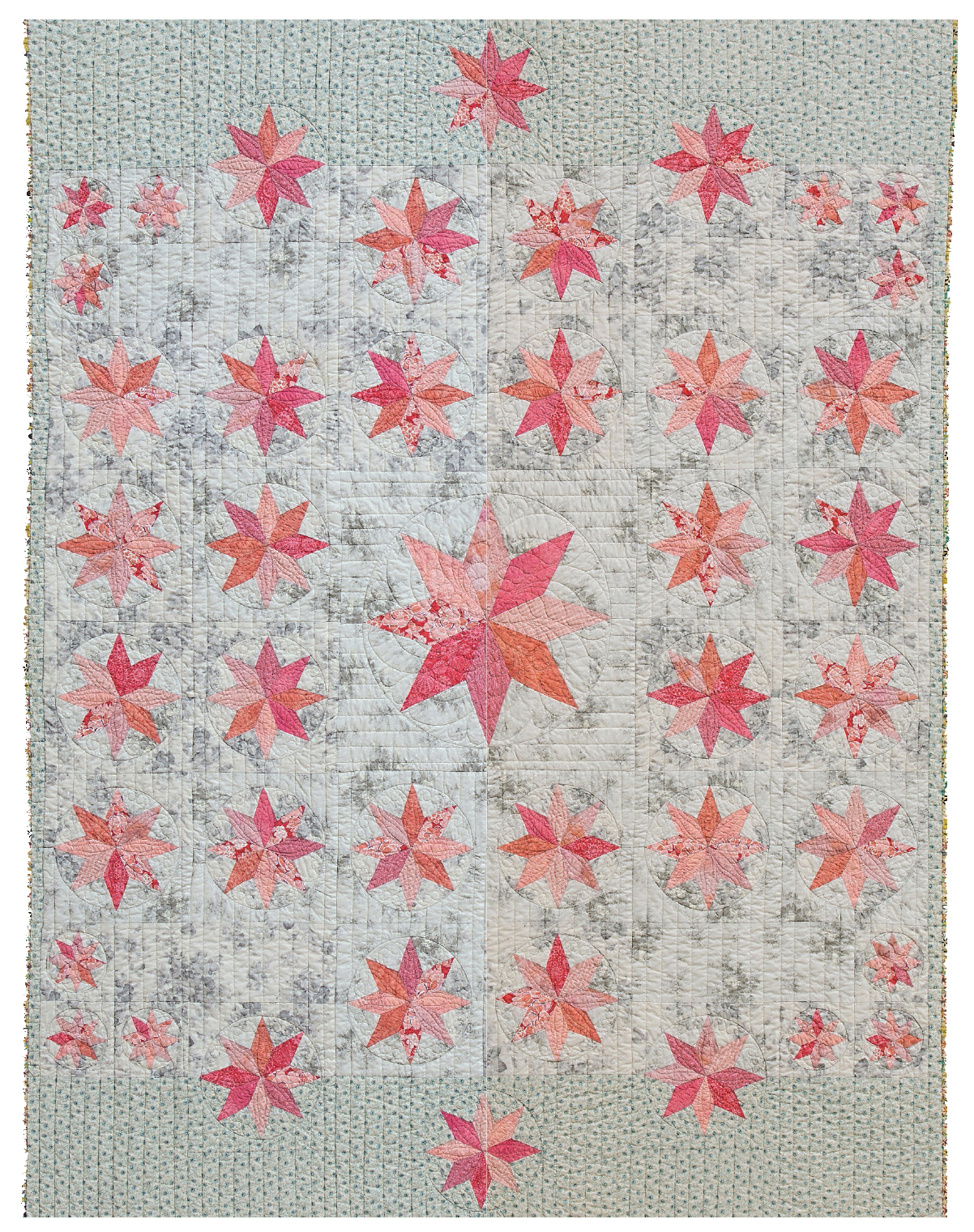 Acknowledgments Thank you to my mother, Louise Cutforth, for always being game to piece for me. This time she got stuck with the 145 blocks of Thrift Shop Junkie . Her patient support and goodwill inspire me to be a better mother, wife, and person. Thank you also to Sharon Blackmore of Love Shack Quilts. Sharons my girl: Shes a fierce artiste and a gifted quilt and longarm quilting designer.
Acknowledgments Thank you to my mother, Louise Cutforth, for always being game to piece for me. This time she got stuck with the 145 blocks of Thrift Shop Junkie . Her patient support and goodwill inspire me to be a better mother, wife, and person. Thank you also to Sharon Blackmore of Love Shack Quilts. Sharons my girl: Shes a fierce artiste and a gifted quilt and longarm quilting designer.
I dont think longarm quilting has been discussed much yet as an art form, but there are those who truly are artists of longarm quiltinga bit like tattoo artistsand Sharons one. Sharon hosts mystery quilts on Facebook with Prairie Quilt Militia, and together with her husband, Jason, she has created online quilting games. Check out Sharons longarm designs and Prairie Quilt Militia (loveshackquilts.com) and their online games (unlocktheblock.ca). And thanks to Kim Jamieson-Hirst, who is a gifted quilter and educator. She creates designs for quilts, soft toys, and hand embroidery under the name Chatterbox Quilts (. I NTRODUCTION I have three girls, currently between ages 16 and 23, and one long-suffering boy, currently 19.
I smile to myself when I hear them talk about their favorite television show or the book everyones reading, not to mention their own he said, she said experiences. My girls get right into that storywhatever it isthey really care about the characters lives. The same applies to art in all its forms; its meant to engage us. To make us care. Thats why a good quilt design offers both a design and a concept behind it. Its an invitation for the quilter to embrace the quilt as a story from his or her own life.
For example, Twenty-Five full of promise and rent daysreminds us what its like to be that tender age. Little Black Dress is a nod to the famous accoutrement every girls closet should hold. And The Oath has a wide, snowy-white border that can be used to display appliqud or embroidered dates and remembrances of life events such as service dates, marriages, and anniversaries. Ive tried to design a series of quilts that I hope most people can engage with, find similarities to their own experience in, or make personal to themselves. In some cases the story was informed by the emerging design, and sometimes the story wrote the quilt. The Mister made his appearance when I was struggling with another design, so I went with him! I hope quilters will find engaging designs and a bit of useful knowledge in Kiss Me.
Ive used techniques such as paper piecing, partial seams, and templates, but I hope Ive translated tricky methods into easy-to-understand lessons, just as I learned them. Devon N OTES Tips This section is not meant to be a comprehensive how-to, merely a collection of tips that Ive learned over the years from excellent teachers, through repetition, or through trial and error (a lot of trial and error). Books like Carrie and Harriet Hargraves Quilters Academy series (by C&T Publishing) are excellent new references and very thorough. Harriet is known for piecing precision and great use of simple tools. One of my favorite reference books from the early 1990s, when first I started quilting, is Great Quiltmaking: All the Basics (by Better Homes and Gardens). I find the text easy to understand, and the illustrations are helpful.
I still refer to my copy on occasion. No doubt there are many great reference sourceschoose one to have on hand. Your local quilt shop will have one to recommend. SEAM ALLOWANCE Unfortunately, not all machine presser feet are accurate. If you have trouble sewing an accurate seam, a piece of masking tape can solve that problem. Place a clear ruler under your machines presser foot and gently lower the needle by hand until the needle touches the ruler at exactly the mark.
Place a piece of masking tape to the right of the ruler, as shown in the photo. The masking tape is now a guide for the edge of the fabric. 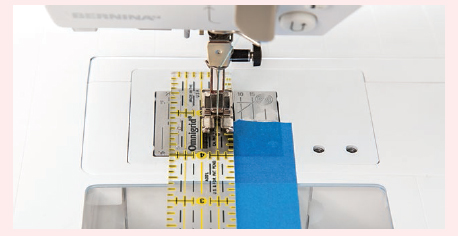 Mark the seam, using masking tape. SCANT SEAMS A scant is about a threads width narrower than an exact . It doesnt seem like much, but a threads width allows for the fold of the fabric over the seam, and on blocks with a lot of seams, it can really mean the difference between a block that finishes to the correct size and one that doesnt. SQUARING BLOCKS Squaring the blocks, or elements within the block, is the key to a perfect quilt top.
Mark the seam, using masking tape. SCANT SEAMS A scant is about a threads width narrower than an exact . It doesnt seem like much, but a threads width allows for the fold of the fabric over the seam, and on blocks with a lot of seams, it can really mean the difference between a block that finishes to the correct size and one that doesnt. SQUARING BLOCKS Squaring the blocks, or elements within the block, is the key to a perfect quilt top.
Position a square ruler on the top of the block. Its easiest to use a ruler that is just a bit larger than the block, and not too big. Be sure the block is at least the size it should be or that there is excess fabric extending beyond the specified block size. Trim away the excess fabric on top and right side of block. Turn the block 180, lining up the specified block size on the ruler with what is now the freshly cut bottom and left side of the block. NOTE Always be aware that trimming away too much can result in cutting away triangle points and other elements, so be very careful. NOTE Always be aware that trimming away too much can result in cutting away triangle points and other elements, so be very careful.
Its better to stitch with an accurate scant seam allowance than to have to trim. 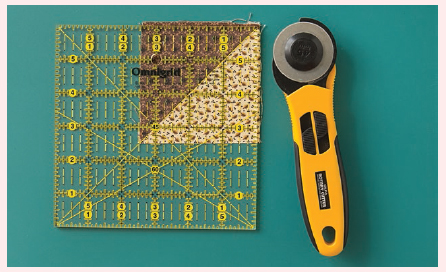 Square the blocks. BIAS-JOINED SEAMS Press the strips and lay them right side up on the cutting board. (You can cut several at once.) Locate the 45 angle on the ruler, and position this on the bottom edge of the strips. Cut to make a 45 angle. TIP Try using a starch alternative, such as Mary Ellens Best Press, to limit stretching of the bias edges. TIP Try using a starch alternative, such as Mary Ellens Best Press, to limit stretching of the bias edges.
Square the blocks. BIAS-JOINED SEAMS Press the strips and lay them right side up on the cutting board. (You can cut several at once.) Locate the 45 angle on the ruler, and position this on the bottom edge of the strips. Cut to make a 45 angle. TIP Try using a starch alternative, such as Mary Ellens Best Press, to limit stretching of the bias edges. TIP Try using a starch alternative, such as Mary Ellens Best Press, to limit stretching of the bias edges.
Best Press makes the fabric more manageable by slightly stiffening it, like the starch widely used in the past, but without leaving a residue. Not only does it make pressing easier but it makes cutting more accurate. I use it sparingly. Sometimes I lightly spray a stack of patches and let them sit in a stack for a few minutes. Pressing is then easy! Trim off the points of the strips left by the 45 cut. This is an important stepit helps you to precisely place the next piece to be stitched.
There are great point trimmers available for just this purpose, or simply use any ruler to measure the point and trim. 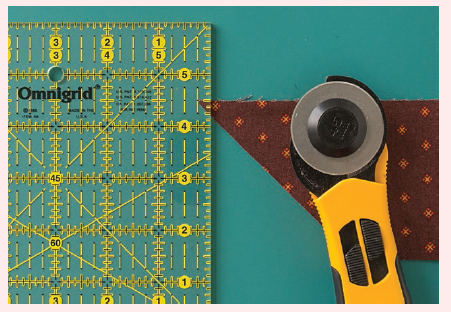
Next page
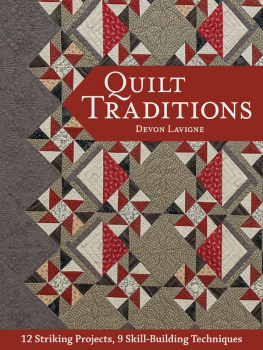


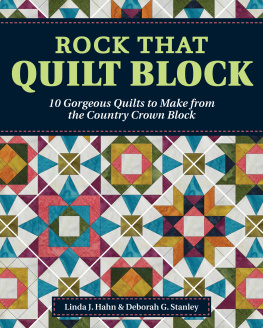
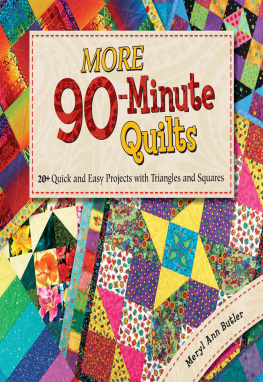
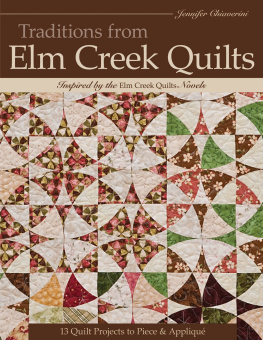
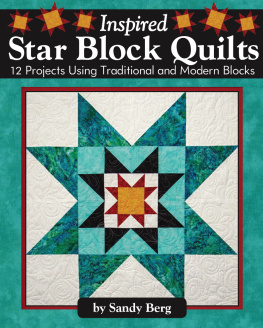
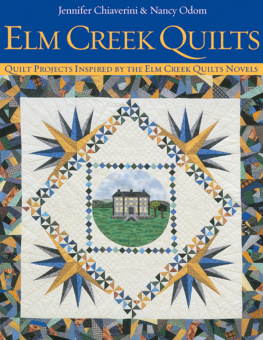
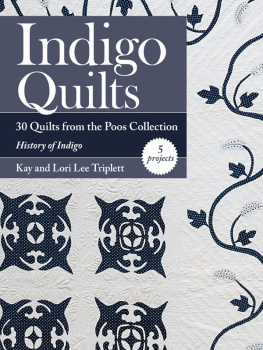
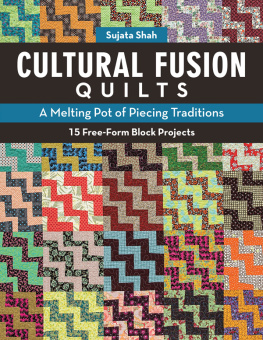

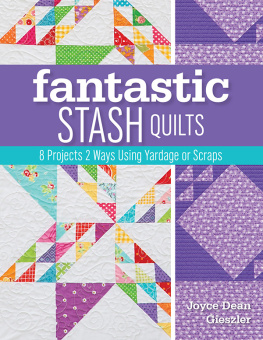

 Acknowledgments Thank you to my mother, Louise Cutforth, for always being game to piece for me. This time she got stuck with the 145 blocks of Thrift Shop Junkie . Her patient support and goodwill inspire me to be a better mother, wife, and person. Thank you also to Sharon Blackmore of Love Shack Quilts. Sharons my girl: Shes a fierce artiste and a gifted quilt and longarm quilting designer.
Acknowledgments Thank you to my mother, Louise Cutforth, for always being game to piece for me. This time she got stuck with the 145 blocks of Thrift Shop Junkie . Her patient support and goodwill inspire me to be a better mother, wife, and person. Thank you also to Sharon Blackmore of Love Shack Quilts. Sharons my girl: Shes a fierce artiste and a gifted quilt and longarm quilting designer. Mark the seam, using masking tape. SCANT SEAMS A scant is about a threads width narrower than an exact . It doesnt seem like much, but a threads width allows for the fold of the fabric over the seam, and on blocks with a lot of seams, it can really mean the difference between a block that finishes to the correct size and one that doesnt. SQUARING BLOCKS Squaring the blocks, or elements within the block, is the key to a perfect quilt top.
Mark the seam, using masking tape. SCANT SEAMS A scant is about a threads width narrower than an exact . It doesnt seem like much, but a threads width allows for the fold of the fabric over the seam, and on blocks with a lot of seams, it can really mean the difference between a block that finishes to the correct size and one that doesnt. SQUARING BLOCKS Squaring the blocks, or elements within the block, is the key to a perfect quilt top. Square the blocks. BIAS-JOINED SEAMS Press the strips and lay them right side up on the cutting board. (You can cut several at once.) Locate the 45 angle on the ruler, and position this on the bottom edge of the strips. Cut to make a 45 angle. TIP Try using a starch alternative, such as Mary Ellens Best Press, to limit stretching of the bias edges. TIP Try using a starch alternative, such as Mary Ellens Best Press, to limit stretching of the bias edges.
Square the blocks. BIAS-JOINED SEAMS Press the strips and lay them right side up on the cutting board. (You can cut several at once.) Locate the 45 angle on the ruler, and position this on the bottom edge of the strips. Cut to make a 45 angle. TIP Try using a starch alternative, such as Mary Ellens Best Press, to limit stretching of the bias edges. TIP Try using a starch alternative, such as Mary Ellens Best Press, to limit stretching of the bias edges.